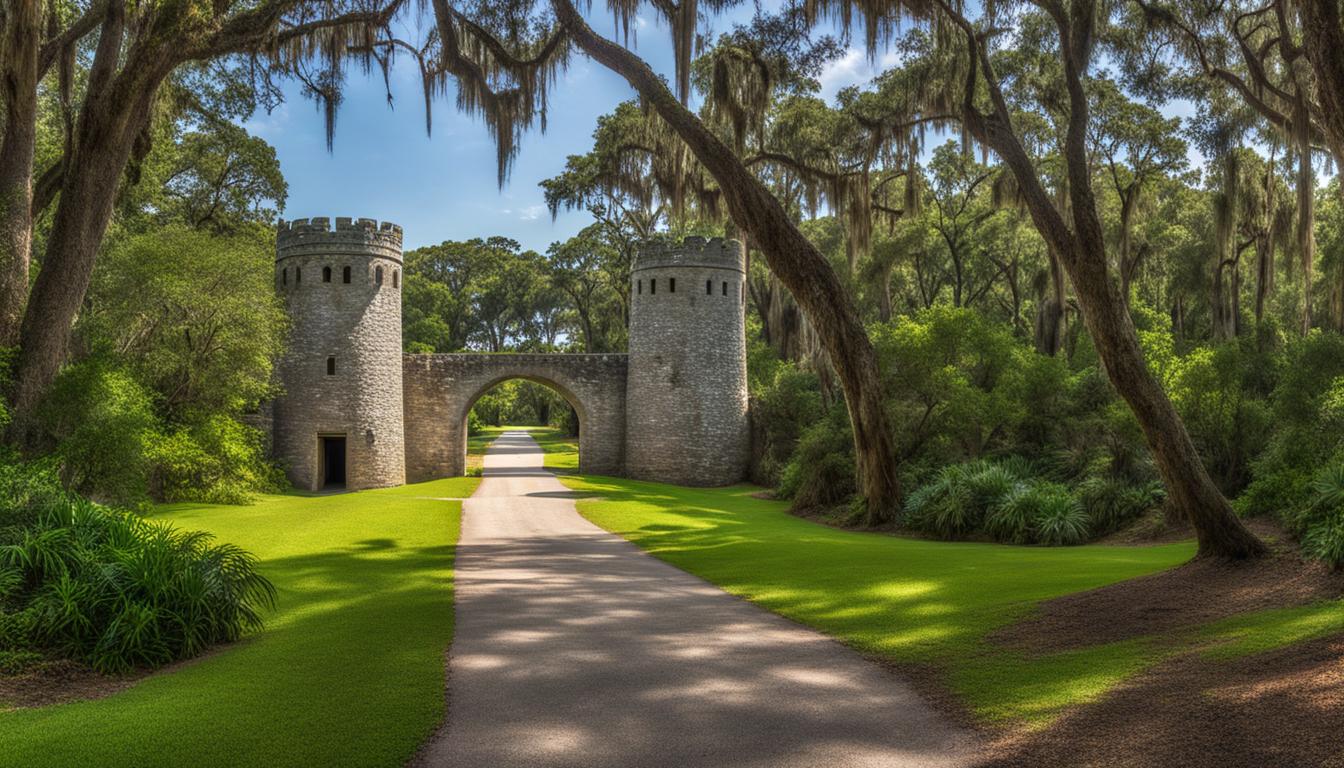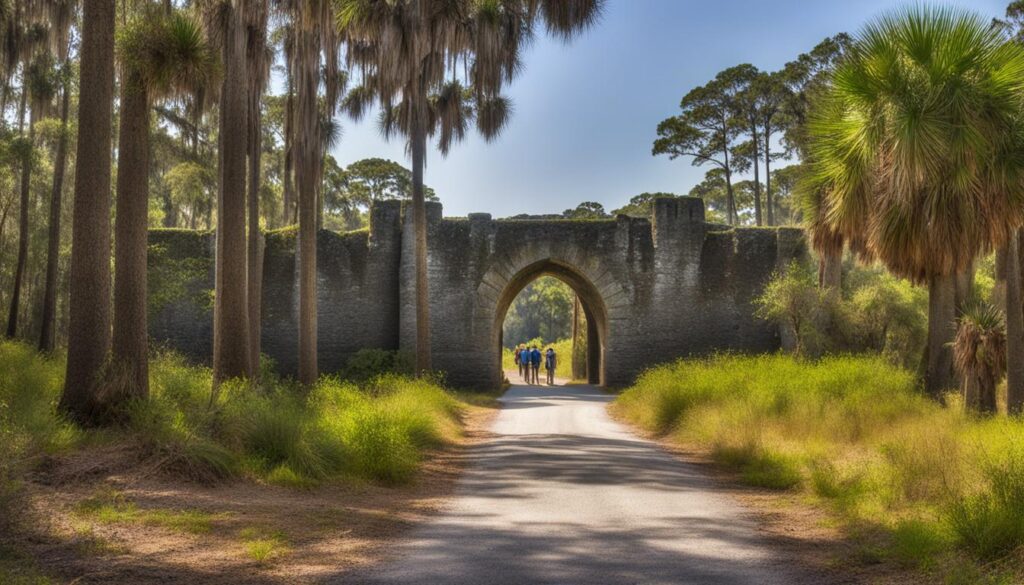
Fort Mose: Unearthing America’s First Sanctuary of Freedom
Before the whispers of the Underground Railroad carried enslaved people to northern freedom, before the Emancipation Proclamation reshaped a nation, there was a beacon of liberty in a land few remember. In the sweltering, mosquito-laden swamps just north of St. Augustine, Florida, a remarkable settlement arose in 1738: Fort Mose. This wasn’t just another colonial outpost; it was Gracia Real de Santa Teresa de Mose, the first legally sanctioned free Black settlement in North America, a testament to courage, resilience, and an often-overlooked chapter of American history.
To understand Fort Mose, one must first grasp the brutal reality from which its inhabitants fled. In the early 18th century, the British colonies of Carolina and Georgia were built on the backs of enslaved Africans, a system of chattel slavery that stripped individuals of their humanity, their families, and their very names. Yet, just a few days’ perilous journey south, a different world existed under Spanish rule. For decades, the Spanish Crown, driven by a mix of religious conviction, geopolitical strategy, and perhaps a nascent sense of justice, had offered a radical promise: freedom.
The Lure of the Spanish Promise

The first definitive decree came in 1693 from King Charles II of Spain. His Real Cedula (Royal Decree) promised liberty to all enslaved people who escaped British Protestant colonies, converted to Catholicism, and pledged allegiance to the Spanish Crown. This wasn’t purely altruistic; Spain saw these "runaways" as potential allies, bolstering its meager frontier defenses against the encroaching British. But for those enduring the dehumanizing conditions of slavery, it was an offer of salvation.
The journey to Spanish Florida was fraught with unimaginable danger. Escaping meant navigating treacherous swamps, dense forests teeming with wildlife, and the constant threat of recapture by British slave patrols and their Native American allies. Yet, the promise of freedom, the mere possibility of a life unburdened by chains, fueled their desperate trek. They were guided by rudimentary maps, whispers carried by the wind, and an unwavering hope that the Spanish flag represented not just a different colonial power, but a genuine sanctuary.
Upon arrival in St. Augustine, the fugitives underwent a process of assimilation. They were baptized into the Catholic faith, often adopting Spanish names, and presented to the colonial governor. Initially, they lived within the walls of St. Augustine, working alongside the Spanish and a small population of free Blacks already present. However, as their numbers grew, Governor Manuel de Montiano recognized the need for a dedicated settlement.
The Founding of Gracia Real de Santa Teresa de Mose
In 1738, Governor Montiano officially established Gracia Real de Santa Teresa de Mose, a fortified village located strategically at the northernmost defensive perimeter of St. Augustine. This decision was a masterstroke, serving multiple purposes: it provided a home for the growing population of libertos (freedmen), created a vital buffer against British incursions, and reinforced Spain’s commitment to its promise of freedom.
The residents of Fort Mose were not just free; they were self-governing. They elected their own leader, a Mandinga-born man named Francisco Menendez, who had escaped from Carolina slavery and proven himself a capable and courageous military leader in Spanish service. Menendez, fluent in Spanish, English, and several African languages, became the Capitán de la Milicia Libre (Captain of the Free Militia), commanding the men of Mose who were tasked with defending the settlement and St. Augustine itself.
Life in Fort Mose was a blend of cultures. African traditions, Spanish customs, and even some elements of Native American life intermingled. They built homes of palm fronds and wattle-and-daub, cultivated crops, and established a community where families could live without the constant terror of the lash or the threat of sale. The fort itself was a simple structure, a watchtower and a series of barracks surrounded by a palisade, but its symbolism was immense. It was a tangible expression of their hard-won liberty, a place where their children could be born free.
The Crucible of Conflict: The Battle of Bloody Mose

The existence of Fort Mose was a direct affront to the British colonies, who viewed their escaped "property" as a valuable loss and a dangerous precedent. This simmering tension erupted into open warfare in 1740, during the War of Jenkins’ Ear. General James Oglethorpe, the governor of Georgia, launched a full-scale invasion of Spanish Florida with a force of British regulars, colonial militia, and Native American allies, intent on capturing St. Augustine and eliminating the troublesome Fort Mose.
As Oglethorpe’s forces advanced, Governor Montiano, understanding Mose’s vulnerability and strategic importance, ordered its inhabitants to evacuate and retreat into St. Augustine. The British subsequently occupied the abandoned fort, using it as an advance staging ground for their siege of the Spanish city.
However, the Fort Mose militia, fighting alongside Spanish soldiers and Native American warriors, played a critical role in the defense. On June 14, 1740, a daring pre-dawn counterattack was launched against the British encampment at Fort Mose. Under the cover of darkness and a thick fog, Spanish and allied forces, including Menendez and his men, surprised the unsuspecting British. The ensuing engagement, known as the Battle of Bloody Mose, was a decisive victory for the Spanish. The British suffered heavy casualties and were forced to abandon Fort Mose, demoralized and significantly weakened.
This pivotal battle not only saved St. Augustine from Oglethorpe’s siege but also underscored the invaluable military contribution of the Fort Mose libertos. Their bravery and loyalty solidified their place within Spanish Florida society, reinforcing the wisdom of Montiano’s decision to grant them freedom and land.
Resilience and Exodus
After the immediate threat subsided, the residents of Fort Mose returned to rebuild their homes and community, albeit in a slightly different location, further inland. For the next two decades, Fort Mose continued its role as a crucial defensive outpost and a thriving community. It served as a testament to the success of Spain’s policy and a constant irritant to its British neighbors.
However, the geopolitical landscape of North America was constantly shifting. The Seven Years’ War (known as the French and Indian War in America) concluded in 1763 with a British victory. In the Treaty of Paris, Spain was forced to cede Florida to Great Britain in exchange for Havana, Cuba. This treaty presented the residents of Fort Mose with a profound and agonizing choice: remain in Florida and face the very real prospect of re-enslavement under British rule, or leave with the Spanish.
The vast majority chose to remain free. The entire population of Fort Mose, along with many other free Blacks and Native American allies, embarked on a mass exodus to Cuba with their Spanish compatriots. It was a poignant testament to their unwavering commitment to liberty, choosing to leave their homes and a land they had fought to defend rather than surrender their freedom. In Cuba, they were resettled in a new community called San Agustín de la Nueva Florida, where their unique cultural blend continued to evolve.
Centuries of Silence and Modern Rediscovery
After the exodus of 1763, Fort Mose faded from mainstream historical narratives. Its physical remains were swallowed by the Florida wilderness, and its story largely forgotten outside of specialist historical circles. For nearly two centuries, the groundbreaking significance of America’s first free Black settlement lay buried, literally and figuratively.
It wasn’t until the 1960s and 70s, amidst the Civil Rights Movement and a renewed interest in African American history, that serious efforts began to unearth this forgotten past. Dr. Kathleen Deagan, an archaeologist from the Florida Museum of Natural History, spearheaded the ambitious archaeological project to locate and excavate the original Fort Mose site.
Deagan and her team faced significant challenges. The site was swampy, heavily overgrown, and lacked clear historical markers. Through painstaking research, ground-penetrating radar, and meticulous excavation, they eventually uncovered the physical remnants of the fort: post holes, ceramics, military artifacts, and personal items that painted a vivid picture of daily life. The archaeological findings provided irrefutable evidence, a physical testament to a narrative long suppressed and often doubted. This work was crucial in validating the oral histories and archival records that spoke of Fort Mose.
A Legacy Reclaimed: Fort Mose Today
Today, Fort Mose is not just an archaeological site; it is a National Historic Landmark and a Florida State Park. Its rediscovery and interpretation have recalibrated our understanding of early American history, challenging the simplistic narrative that freedom for Black people only began with the Civil War. Fort Mose demonstrates that the quest for liberty was a continuous, active struggle, predating the American Revolution and involving complex international dynamics.
The Fort Mose Historic State Park now features an interpretive center that guides visitors through the compelling story of the settlement, its people, and their fight for freedom. Through exhibits, historical markers, and educational programs, the park educates thousands each year about this pivotal chapter. Living history events, such as the "Flight to Freedom" reenactment, bring the perilous journey of the runaways to life, allowing visitors to experience a glimpse of the desperation and hope that defined their quest.
Fort Mose is increasingly recognized as a precursor to the Underground Railroad, a testament to a transnational movement for freedom that spanned centuries. It highlights the agency of enslaved people, their willingness to risk everything for self-determination, and their vital role in shaping the geopolitical landscape of colonial North America. It also underscores the often-complex and contradictory roles of European powers in the institution of slavery and the struggle for emancipation.
The story of Fort Mose resonates deeply in contemporary discussions about race, freedom, and national identity. It reminds us that America’s history of liberty is not a monolithic narrative but a tapestry woven with countless threads of struggle, resilience, and extraordinary courage. Fort Mose stands as a powerful symbol of defiance against oppression, a beacon that shone brightly in a dark era, and a testament to the enduring human spirit’s unwavering pursuit of freedom. Its unearthing is not just an archaeological triumph, but a profound act of historical reclamation, ensuring that the voices of America’s first freedom seekers are heard, loud and clear, across the centuries.


